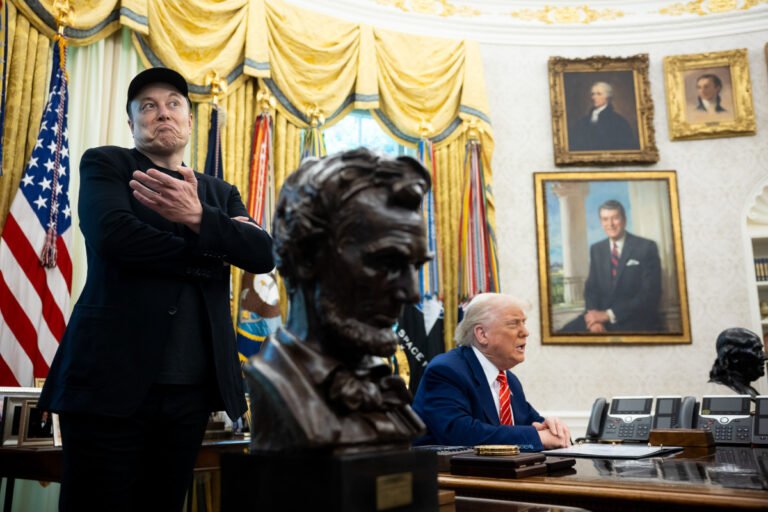
ZUMA Press Wire via Reuters Connect
- President Donald Trump has announced a trade deal with Vietnam.
- He lowered tariffs on Vietnam to 20% but is slapping 40% tariffs on transshipments through the country.
- Vietnam has benefited from supply-chain shifts due to US-China trade tensions.
President Donald Trump just gave Vietnam a trade break — and used it to squeeze China.
On Wednesday, Trump announced a trade deal with Hanoi that would levy 20% on imports from Vietnam, down from the 46% rate Trump announced on “Liberation Day.” In return, Vietnam has agreed to allow American goods to enter the country duty-free.
What’s also significant is that Trump announced a 40% tariff on goods shipped from another country via Vietnam to the US — a move that analysts say is aimed squarely at transshipments from China.
“The ‘China quotient’ in US negotiations with other Asian economies is arguably evident in the deal with Vietnam,” wrote Vishnu Varathan, Mizuho’s macro research head for Asia, excluding Japan, in a Thursday note.
“The US’s intent is quite obviously to not disincentivize Vietnam’s role as a substitute for China at a lower 20% tariff,” he added.
Vietnam has benefited from global supply-chain shifts away from China since Trump’s initial trade war during his first term. In response to those tariffs, many multinational companies, including Chinese firms, moved manufacturing operations to lower-cost hubs like Vietnam to sidestep US duties.
Last year, the US ran a $123.5 billion trade deficit with Vietnam, making it America’s third-largest trade gap after China and Mexico, according to the US Trade Representative’s office.
A model for future trade deals?
The move follows a temporary truce between Washington and Beijing in May, when both sides agreed to a 90-day pause in their tariff war. The US slashed duties on Chinese goods from 145% to 30%, while China lowered its tariffs on American imports from 125% to 10%.
Still, the transshipment tariff on Vietnam underscores the Trump administration’s effort to close the backdoor for Chinese exporters seeking loopholes into the US market.
“A tariff framework that targets transshipment while preserving the potential benefits of efficient cross-border commerce is a smart move— and a model for future trade deals — if enforced transparently and paired with clear rules of origin,” wrote Eli Clemens, a policy analyst at Washington-based Information Technology and Innovation Foundation, a nonpartisan research institute, on Wednesday.
The move also shows that Washington can stop Chinese supply chains from extending themselves into Southeast Asia.
“Future trade negotiations should also include targeted transshipment deterrents that level the playing field for US manufacturers and retailers,” Clemens wrote.
Asia in a bind
Washington’s focus on transshipment enforcement puts pressure on other Asian economies, which may find themselves forced to choose sides.
“It would be remiss to ignore this critical pillar of US trade deals with the rest of Asia, which is trained on undermining China’s economic reach and influence,” wrote Varathan.
The deal may also reinforce Beijing’s view that US trade negotiations lacks “good faith.” It could prompt retaliation — not just against the US, but also against Asian economies seen as siding with Washington.
“Other Asian economies will be particularly vulnerable to a two-sided geoeconomic squeeze given that their reliance on both China and US are significant,” Varathan added.
Despite reservations about the deal, it still excited investors.
The S&P 500 and the Nasdaq Composite soared to record highs on Wednesday, and US stock futures are extending gains early on Thursday.
Vietnam’s widely followed VN-Index also rose to its highest level since April 2022.






